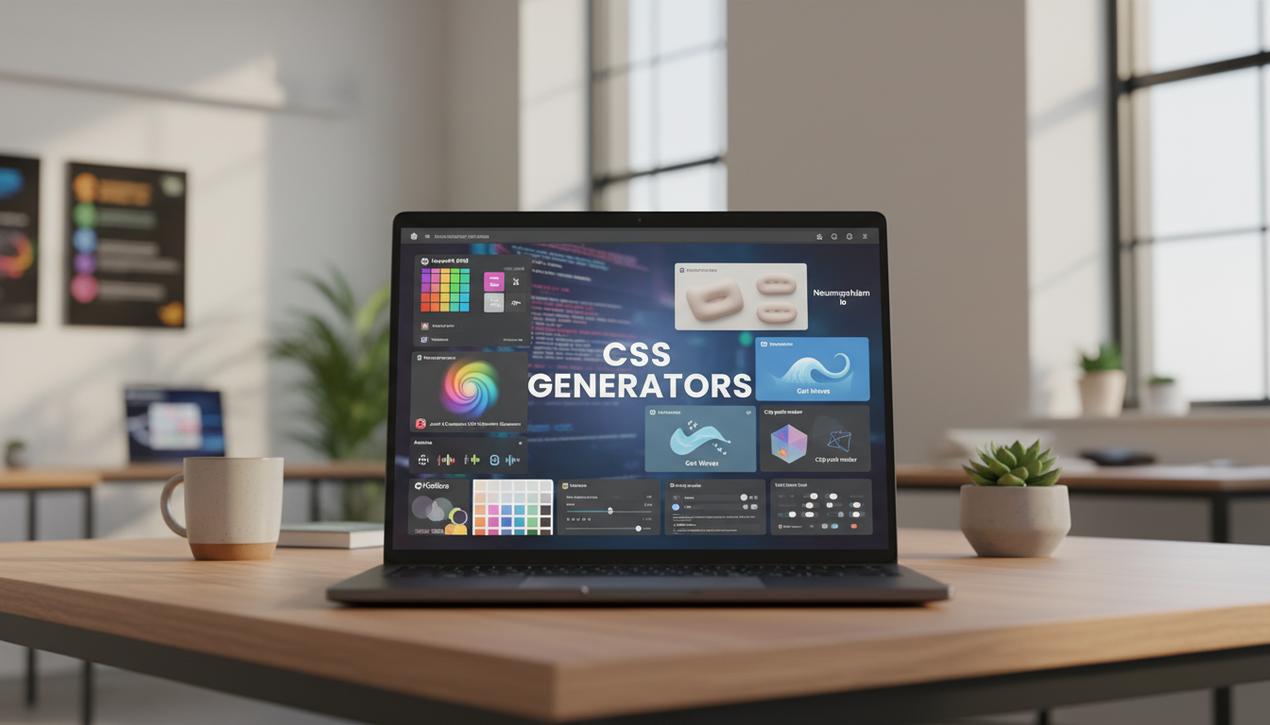Top 12 Best Online Survey Tools for 2025


In the digital age, data is king. For any business aiming to understand its customers, evaluate a market, or measure employee satisfaction, gathering feedback is no longer an option—it’s a strategic necessity. The global online survey software market reflects this, projected to exceed $10 billion by 2025 with a compound annual growth rate of over 12%. Online questionnaires have become the primary method for collecting this invaluable information quickly, efficiently, and at scale. These are no longer simple static forms; modern solutions integrate artificial intelligence, automation, and conversational interfaces to maximize response rates and the quality of data collected. Whether you’re a startup validating a product, a small business improving customer service, or a large corporation measuring internal engagement, choosing the right tool is the first step toward making informed, data-driven decisions. This comprehensive guide presents the 12 best platforms for creating online surveys in 2025, along with proven strategies to ensure your success.
Key Trends Shaping Online Surveys in 2025
The world of online feedback is evolving rapidly. Static, one-size-fits-all forms are being replaced by interactive, intelligent experiences. Understanding these trends is crucial for selecting a tool that not only meets your current needs but also prepares you for the future of data collection.
AI-Powered Creation and Analysis
Artificial intelligence is no longer a futuristic buzzword; it’s a practical feature in leading survey platforms. AI assists in several ways. First, through intelligent question generation, where the system suggests relevant, unbiased questions based on your survey’s goals. Second, and more powerfully, is through semantic and sentiment analysis of open-ended text responses. AI can automatically identify recurring themes, categorize comments, and gauge the emotional tone (positive, negative, neutral), saving hundreds of hours of manual work and providing deeper insights.
The Rise of Conversational and Gamified Experiences
“Survey fatigue” is a significant challenge that leads to high drop-off rates. To combat this, the trend is moving towards conversational forms. Tools like Typeform pioneered this one-question-at-a-time approach, which feels more like a natural dialogue than a test. This format is less intimidating and far more engaging, especially on mobile devices where over 50% of surveys are now completed. Gamification is another effective technique, incorporating elements like progress bars, points, and interactive question types to motivate respondents and encourage them to complete the survey.
Hyper-Personalization with Advanced Logic
A relevant survey is a personalized one. Conditional logic, or “skip logic,” is a standard feature that adapts the survey path based on previous answers. For instance, if a user indicates they are “dissatisfied” with a product, they can be branched to a specific set of follow-up questions. Modern tools are taking this a step further with “piping,” which allows you to insert a respondent’s previous answer into a later question (e.g., “You mentioned you liked the blue widget. What specifically did you like about it?”). This creates a highly customized and engaging experience that yields more accurate data.
The 12 Best Online Survey and Questionnaire Tools
The market is filled with options, from simple free tools to complex enterprise-grade platforms. We have selected 12 of the best solutions that stand out for their features, ease of use, and overall value for various needs and budgets.
1. Google Forms: The Simple, Free, and Universal Choice
Best for: Quick polls, event registrations, internal feedback, and educational use.
Google Forms is the most accessible tool for anyone getting started. As part of the free Google Workspace suite, it allows you to create unlimited surveys with surprising simplicity. Responses are automatically collected in a Google Sheet, making basic data analysis straightforward. While its design customization and advanced features are limited, its absolute lack of cost and real-time collaboration make it an essential tool.
2. SurveyMonkey: The Established Industry Leader
Best for: In-depth market research, complex customer satisfaction surveys, and academic studies.
SurveyMonkey is arguably the most recognized name in the online survey industry. It is a feature-rich platform offering a massive library of templates and question types. Its true power lies in its robust analytics suite, which enables users to filter results, create cross-tab reports, and generate professional dashboards. The free version is quite limited, making it better suited for professionals ready to invest in a paid plan.
3. Typeform: The Champion of User Experience
Best for: Marketing surveys, lead generation forms, and any brand-conscious company focused on engagement.
Typeform revolutionized the market with its beautiful, one-question-at-a-time conversational interface. The experience is so fluid and visually appealing that it often leads to higher completion rates. It offers deep design customization, advanced conditional logic, and hundreds of integrations with tools like Slack, HubSpot, and Mailchimp.
4. Jotform: The Most Versatile and Powerful Form Builder
Best for: Creating complex forms that require payment processing, e-signatures, or workflow automation.
Jotform is much more than a survey tool; it’s an all-in-one form builder. It offers thousands of templates and widgets, allowing you to build everything from simple polls to complex application forms. It can integrate payment gateways, collect file uploads, and automate workflows by sending data to other apps. Its free plan is one of the most generous available.
5. Qualtrics: The Enterprise-Grade Research Platform
Best for: Large organizations, academic institutions, and anyone needing sophisticated research capabilities.
Qualtrics is a powerhouse platform focused on “Experience Management” (XM). It goes far beyond simple surveys, offering advanced features like predictive intelligence (iQ), complex statistical analysis, and dedicated solutions for customer, employee, product, and brand experience. It’s a premium tool with a price tag to match, aimed at users who need deep, actionable insights.
6. Alchemer (formerly SurveyGizmo): The Flexible Expert Tool
Best for: Researchers and businesses that require deep customization and control over every aspect of their surveys.
Alchemer is an extremely feature-rich platform designed for survey professionals. It allows for profound customization of survey behavior, appearance, and reporting. It supports a wide range of question types and allows for multi-channel distribution. While it has a steeper learning curve, it provides nearly limitless possibilities for those who need them.
7. Zoho Survey: The Perfect Fit for the Zoho Ecosystem
Best for: Businesses already using other Zoho products like Zoho CRM or Campaigns.
If your company operates within the Zoho ecosystem, Zoho Survey is a natural choice. Its seamless integration with Zoho CRM allows you to automatically trigger satisfaction surveys after a customer interaction and feed the responses directly back into the customer record. The tool offers a great balance of features and affordability.
8. Tally: Radical Simplicity and a Generous Free Plan
Best for: Startups, creators, and teams looking for a clean, simple, and affordable alternative to Typeform.
Tally operates on a unique and highly attractive model: 99% of its features are available for free with no limits on questions or responses. The creation interface is as simple as writing in a text document, making it incredibly fast to build and launch surveys. It’s the perfect tool for those who value simplicity and elegance without a hefty price tag.
9. SurveySparrow: The Conversational and Engaging Platform
Best for: Mobile-first surveys, recurring feedback, and improving response rates through a chat-like experience.
SurveySparrow takes the conversational concept even further by offering both chat-like surveys and classic forms. This dual approach helps create highly engaging experiences that can significantly boost completion rates. It is particularly strong in collecting recurring feedback, such as NPS (Net Promoter Score) or employee pulse surveys.
10. GetFeedback: The Customer Feedback Specialist
Best for: Measuring and improving customer experience (CX) across all touchpoints.
Now part of SurveyMonkey, GetFeedback is specifically designed to help companies understand and improve their customer experience. It creates beautiful, mobile-friendly surveys and integrates deeply with Salesforce, allowing you to trigger surveys based on customer actions and analyze feedback within your CRM for a 360-degree view.
11. Checkbox: The Secure, On-Premise Solution
Best for: Government agencies, financial institutions, and healthcare organizations with strict data security requirements.
Checkbox is one of the few survey platforms that can be installed on your own servers (on-premise), giving you complete control over your data. It is a robust and highly customizable tool, though its user interface can feel less modern than some of its cloud-based competitors. Its strength lies in security and compliance.
12. Microsoft Forms: The Integrated Office 365 Option
Best for: Companies and educational institutions heavily invested in the Microsoft 365 ecosystem.
Similar in simplicity to Google Forms, Microsoft Forms is included with many Microsoft 365 business and education subscriptions. It integrates flawlessly with tools like Excel, Teams, and SharePoint, making it an extremely convenient choice for internal surveys, quizzes, and data collection within an organization.
14 Essential Tips for Creating an Effective Online Survey
The best tool in the world won’t save a poorly designed questionnaire. Your methodology is the key to collecting reliable, actionable data. Follow this checklist to ensure your survey is a success.
- Define a Single, Clear Objective: Before you write a single question, know exactly what you want to learn. Every question must serve this primary goal.
- Write a Compelling Introduction: Briefly explain the survey’s purpose, estimate the time it will take, and assure respondents of their privacy or anonymity.
- Keep It Short and Focused: Respect your audience’s time. Aim for a completion time of under 5 minutes. More questions lead to higher abandonment rates.
- Start with Easy, Engaging Questions: Ease respondents into the survey with simple, broad questions before moving to more specific or sensitive topics.
- Prefer Closed-Ended Questions: Multiple-choice, rating scales, and yes/no questions are faster for users to answer and much easier for you to analyze.
- Use Open-Ended Questions Sparingly: Save these for the end of the survey and make them optional. They provide valuable qualitative insights but require more effort from respondents.
- Be Neutral and Unbiased: Avoid leading questions that suggest a desired answer. Instead of “How much did you enjoy our amazing new feature?” ask “How would you rate our new feature?”
- Avoid Double-Barreled Questions: Ask only one thing per question. “Was the service fast and friendly?” should be split into two separate questions.
- Optimize for a Mobile-First Experience: The majority of surveys are opened on a smartphone. Test your survey on a mobile device to ensure it’s easy to read and that buttons are easy to tap.
- Maintain a Clean and Professional Design: Use your company’s logo and colors to build trust. A clean, uncluttered layout improves readability and credibility.
- Use Conditional Logic to Keep It Relevant: Don’t ask questions that aren’t relevant to the respondent. Skip logic is essential for keeping users engaged.
- Test Your Survey Before Launch: Send your survey to a few colleagues to check for typos, ambiguous questions, or technical glitches.
- Choose the Right Distribution Channel: Reach your target audience where they are, whether it’s through email, social media, a website pop-up, or a QR code.
- Offer an Incentive (Carefully): A discount, a chance to win a prize, or exclusive content can boost response rates. However, be mindful that this can sometimes attract respondents who are only interested in the reward.
Creating an effective online survey is a blend of art and science. It requires choosing the right tool for your needs, applying a rigorous methodology to your question design, and thoughtfully analyzing the results. By following the advice in this guide, you can transform your surveys from simple feedback forms into a powerful engine for strategic insight, helping you to innovate, optimize your operations, and build stronger relationships with your audience. Remember that every response is an opportunity to learn and grow.




